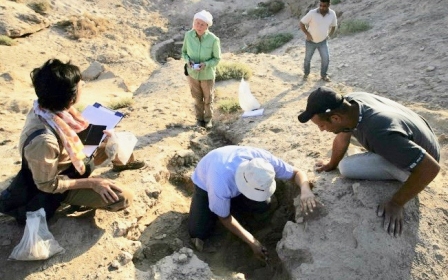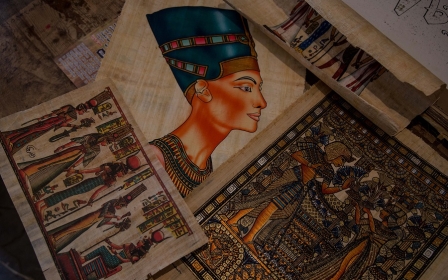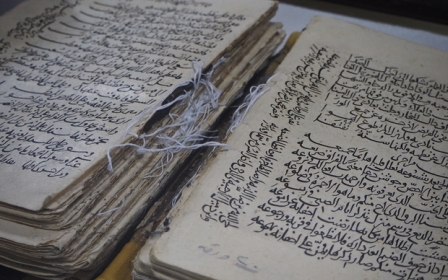Egyptian criminal gang discovers ancient Christian site

Egyptian authorities have discovered an ancient Christian necropolis from the Greco-Roman era which they say could be part of an undiscovered city, after arresting a gang that excavated the site in southern Egypt's Minya on Wednesday.
After a four-month operation conducted by the tourism police, which closely monitored the gang, the suspects were arrested while attempting to smuggle 484 ancient coins dating to the Greco-Roman period, the Egyptian interior ministry said in a statement.
'They waited until the gang finished excavating the site and found what they wanted, then they caught them red-handed'
- Colonel Mohamed Salah, councillor
“The tourism police has been monitoring the site for four months. They waited until the gang finished excavating the site and found what they wanted, then they caught them red-handed,” said Colonel Mohamed Salah, a councillor of Abu Qurqas town, where the site is located.
The necropolis was not registered as an archaeological area which is why there was no security to guard it, Mostafa al-Waziri, secretary-general of the High Antiquities Council, said.
Undiscovered city
According to Waziri, the tombs date back to an era when Christians fled to southern Egypt from the main cities to escape repression, until they were recognised as an official religious group in AD 312.
The tomb may be part of an undiscovered city, he added.
During the Greco-Roman period people buried their dead outside city limits, for sanitary and religious purposes.
“The thieves uncovered an entire archaeological city dating back to the Greco-Roman era, with many rock-carved tombs extending to about 2 km by 600 meters, as well as columns and a Greco-Roman church with a niche and two columns and a cross,” Salah said.
The security report released by the interior ministry said the discovery included a 100-meter church with frescoes on walls and tombs on three levels. The site dates back to the second, third and fourth centuries, the report said.
Stay informed with MEE's newsletters
Sign up to get the latest alerts, insights and analysis, starting with Turkey Unpacked
Middle East Eye delivers independent and unrivalled coverage and analysis of the Middle East, North Africa and beyond. To learn more about republishing this content and the associated fees, please fill out this form. More about MEE can be found here.




